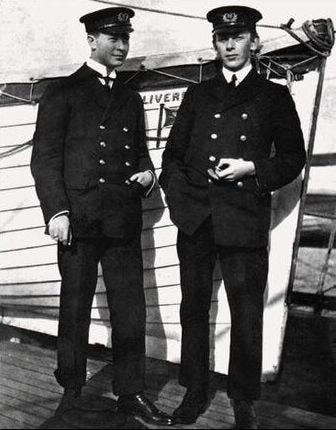The Battle for the Soul of Titanic: The extraordinary story of the controversial company that owns the most famous ship in history
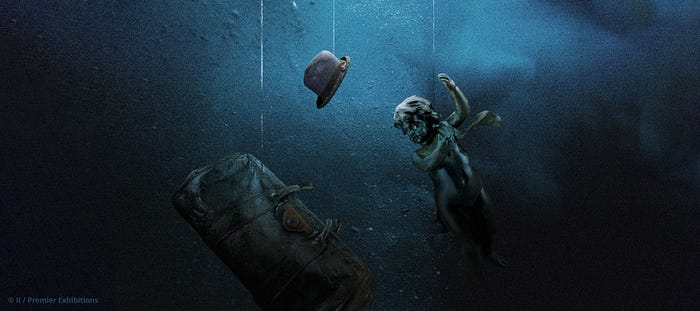
Updated: Mar 1, 2024
“Three years; I’ve thought of nothing except Titanic, but I never got it. I never let it in.” These are the very last words spoken in James Cameron’s three-hour-plus mega-blockbuster, ‘Titanic’.
But they’re not from either of the two main characters, Jack Dawson (Leonardo DiCaprio) or Rose Dewitt Bukater (Kate Winslet). Instead, it is salvage hunter Brock Lovett (Bill Paxton), who has spent his career incessantly trawling through Titanic’s wreck for a priceless necklace, who closes one of the most acclaimed and successful films of all time.
In the moving moment of self-reflection, Lovett somberly accepts that it took a survivor to confront him with the true horrors of that fateful night before he could realise that he never got ‘it’ — the most important part of Titanic’s story: the loss of more than 1,500 people.

But the real-life Lovetts — the sole owners of Titanic’s wreck and her artefacts — are yet to have the epiphany their uncanny villainous Hollywood counterpart has.
As we celebrate 25 years of the Hollywood epic and mark the 38th anniversary of the wreck’s discovery, the salvage company steeped in ethical and legal controversy has announced that they will resume a legally questionable mission to retrieve the ship’s Marconi telegraph machine, which tells one of the most poignant stories from that fateful night, and they will do it without seeking permission.
It is the most recent episode in a long and sinister series that should make you as angry as I am. This is the Battle for the Soul of Titanic — let me put the pieces together.

Titanic plummeted two-and-a-half miles to the bottom of the Atlantic Ocean off the coast of Newfoundland on her maiden voyage in 1912, taking more than 1,500 lives with her.
For two long hours that night, Jack Phillips and Harold Bride sent wireless distress calls from Titanic and desperately communicated with nearby ships.
Constantly switching between the long-established ‘C.Q.D’ and never-before-used ‘S.O.S’, the two operators exhausted every available option, right up until the very last minute.
Their persistence led to rescue ship Carpathia hearing Titanic’s calls for help and undoubtedly helped save the lives of more than 700 people.
The chilling perseverance from the Marconi operators, who worked until the water came in around their feet, is embodied in the final message sent at 2:10 am, the moment the ship violently split in two and ten minutes before she slipped beneath the surface: ‘C.Q… *silence*’.
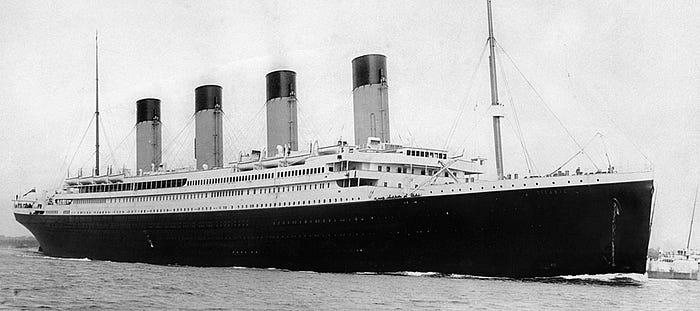
Titanic remained undisturbed for nearly 75 years until an international team led by oceanographer Dr. Robert Ballard discovered her on 1st September 1985.
Ballard firmly believed the wreck should be left as a gravesite and refused to lift anything from the ship or debris field.
It was a decision that was bold, brave, but in hindsight, potentially catastrophic.
Because Dr. Ballard did not claim ‘ownership’ by lifting something from Titanic, the most famous shipwreck in history quickly became the centre of lengthy, bitter and controversial legal and ethical battles — which rage on to this day.
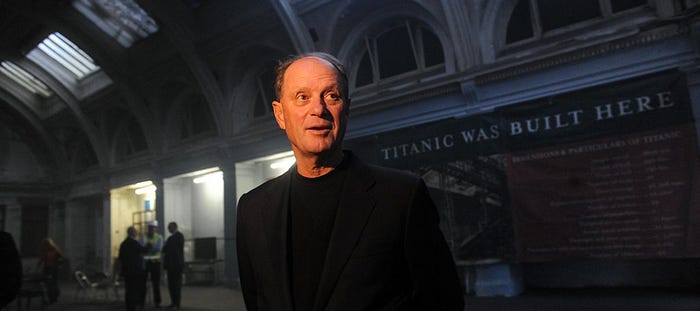
Despite well-meaning legislation from Congressman Walter B. Jones, Sr. —who was concerned about Titanic being torn apart for profit and attempted to introduce the ‘Maritime Memorial Act’ in 1986 — and many heartfelt discussions since, the thirst to profit from the disaster has remained unquenchable.
Establishing present-day ownership is difficult for two reasons. Firstly, Titanic’s original owner, White Star Line, eventually folded into Cunard in 1934. Titanic was not part of the merger because she was considered unrecoverable, having sunk more than two decades earlier. Secondly, she lies in international waters.
Two years after the wreck’s discovery, in 1987, a Connecticut-based consortium, Titanic Ventures Inc — later to become R.M.S. Titanic Inc (RMST)— began the first salvage operation to lift artefacts from the wreck.
Led by a reality TV producer, a dwarf-tossing agent and a diamond-obsessed hunter, the venture lifted thousands of artefacts to the surface.
Titanic survivor Eva Hart condemned it as a ‘looting of a mass sea grave just to make a few thousand pounds’.
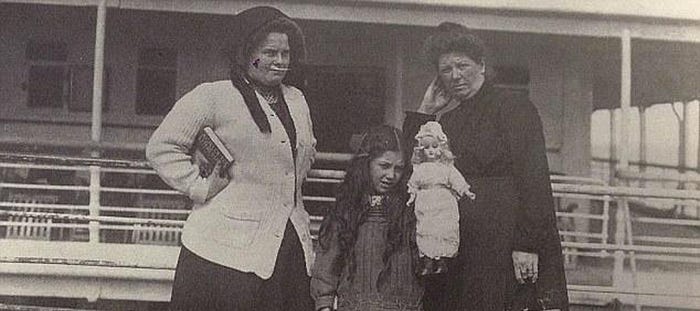
What followed was decades of squabbling over decaying children’s shoes, unopened champagne bottles and intimate handwritten notes. For reasons that remain mostly unknown other than they were the first to recover artefacts from the wreck, in 2009, RMST, a subsidiary of Premier Exhibitions Inc., emerged as the sole legal owner of the salvage rights, operations and artefacts.
They are now the only entity legally allowed to salvage items from the wreckage.
Although a U.S. judge ruled that a “free finders-keepers policy is but a short step from active piracy and pillaging”, RMST was allowed to retain and display the 5,500 artefacts it had already pulled from the wreck from more than 30 dives.
And it did so — in a Las Vegas casino.

The ruling was refuted by many and opposed by the Titanic’s former insurer, the Liverpool and London Steamship Protection and Indemnity Association.
But RMST told a court it should be declared the legal owner of the artefacts, valued at over £100m, to help recover its many costly dives to the ship. At the same time, shareholders were pressuring the company to be more aggressive in profiting from the valuable shipwreck.
RMST founding member and shareholder Joe Marsh told the New York Times: “We all know there are billions of dollars down there under the water. It’s like sitting on a gold mine, and if we can pull up $1 billion worth of stuff, we are going to figure out how to get $1 billion out of it.”
Premier Exhibitions stocks soared by over 200% in the one year alone.

As part of the ruling, RMST was bound to keep the two largest collections, the ‘American Collection’ and the ‘French Collection’, together forever for public benefit and research, and was not permitted to break them up for sale.
But inside the company, tensions were becoming unbearable. And in 1999, a dramatic takeover replaced then-CEO George Tulloch, a BMW dealer who had raised the ‘big piece’, a 20-ton section of the Titanic’s hull, to the surface.
The following year, former “dwarf-tossing” agent Michael Harris, who led the charge against Tulloch, was forced out over allegations of embezzling company funds. He was later embroiled in a legal dispute with the company after he used four artefacts raised from the Titanic to get a loan to fund a reality TV touring exhibition. Harris later claimed he had been gifted several artefacts.
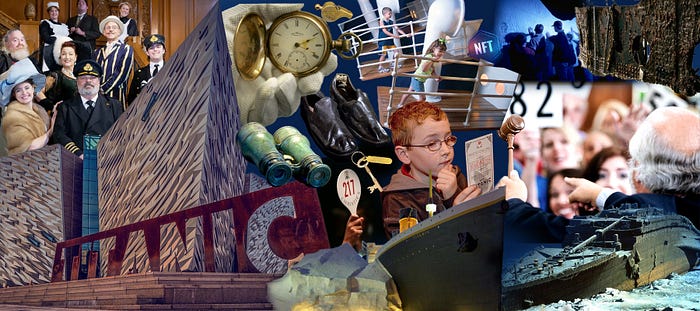
During all this, the Securities and Exchange Commission fined Marsh and five other investors over $400,000 for giving “materially false and misleading statements”.
Another founding member, John Joslyn, who eventually sold his shares and set up two Titanic visitor attractions in Branson (Missouri, USA) and Pigeon Forge (Tennessee, USA), said of his time at RMST: “I worked with a lot of movie and TV people, and I have never seen so much underhandedness going on in my life. Nobody had any scruples.”

Another internal battle forced out then-CEO Arnie Geller — who advocated sawing through the hull of Titanic to look for diamonds — and replaced him with hedge-fund manager Mark Sellers.
Despite all of this, RMST was still declared the owner of Titanic’s wreck and artefacts, and its touring exhibition has since been viewed by more than 35 million people worldwide, including a 9-year-old me.
For better or for worse, it seemed the issue had been largely put to bed.
That was until the 15th April 2012, when Titanic automatically became protected by UNESCO under international legislation from 2001, which protects cultural, historical, or archaeological objects that have been underwater for 100 years. No longer could the wreck be picked apart for profit.
Perhaps because of this and the immense success of Titanic Belfast — the world’s largest, and arguably, most authentic, Titanic visitor experience, built next to her shipyard and opposite her drawing offices— which opened a few years earlier, Premier Exhibitions filed for bankruptcy in 2016.

It wasted no time declaring war with the courts to overturn the agreement, gain the right to break up and sell off the artefacts, which included jewellery and clothing, to repay creditors.
A month after a judge denied them this permission, RMST sued the French government who argued that the agreement between Premier and France at the time of the first salvaging required the ‘French Collection’ to be kept together.

Premier successfully claimed that its “unconditional” right to the artefacts permitted it to sell them and announced nearly 6,000 objects would be auctioned off in 2018, with a minimum bid set at £16.5m.
A mammoth effort was launched by the National Geographic Society, Titanic Belfast, The National Maritime Museum, National Museums Northern Ireland and Titanic Foundation Ltd to bring the artefacts back to Belfast.
The push was backed by Academy Award-winning director James Cameron and the man who discovered the wreck, Dr Robert Ballard.
Despite being rightly critical of the bidding process set by the bankruptcy court, together they pledged to raise £14.7m to buy Premier Exhibitions and its Titanic collection so the museums could co-own and preserve the artefacts as a single exhibit in Titanic Belfast.
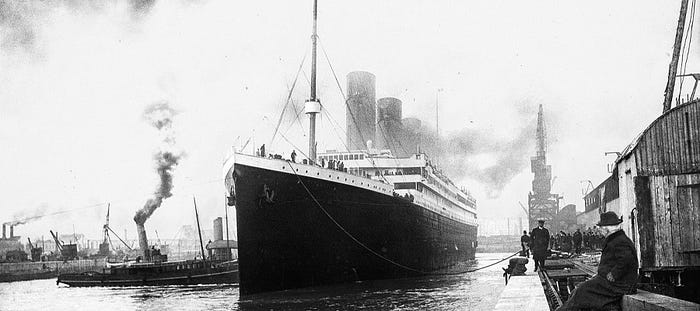
Sadly, they failed to meet the minimum £16.5m bid set by Premier Exhibitions and were excluded from the auction on 11th October 2018.
The thousands of precious artefacts were sold off to private bidders and haven’t been seen since.
Oh — and RMST survived bankruptcy.
Buoyed by their remarkable recovery, RMST unveiled a world-fist: Titanic NFTs (non-fungible tokens). In partnership with Crypto.com, the coins were AirDropped to winners to mark the 110th anniversary and went on sale for up to $30,000.
And with that, once again, it felt like the Titanic salvaging row had been somewhat put to rest — until 2020.
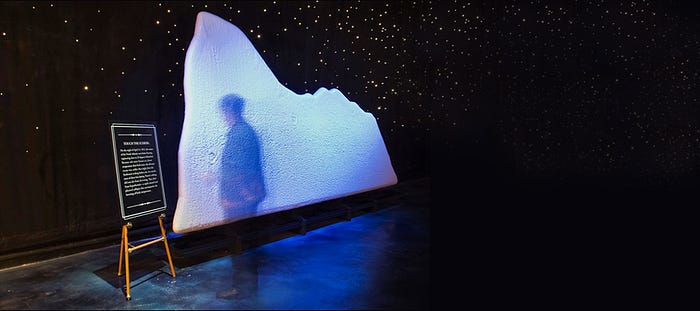
Having miraculously survived bankruptcy a couple of years earlier, RMST then won a court ruling allowing them to overturn protection from two decades prior that prevented any cutting into the wreck or detaching it.
A century of protections, agreements, arguing and rulings cast aside, RMST planned to retrieve the Marconi telegraph machine used by the two heroic operators for public display (for now at least), and break the ship up in the process.

Appearing to have overlooked a long legacy of poor judgement and bandit behaviour from RMST entirely, Virginian state Judge Rebecca Beach Smith ruled on a historic case that overturned previous judgements and set a dangerous precedent that risked restarting the race to the bottom of the ocean.
It was a decision that didn’t take into account the abusive, frivolous and mercenary way in which RMST has exploited Titanic and her artefacts.
It didn’t contain any guarantee that new or already-surfaced artefacts would be kept public and accessible, and not sold off to the highest bidder to keep private companies and its directors afloat.
And it did not stop the 2018 bankruptcy-auction sham from being repeated — that alone should have played a heavy role in blocking, or at least restricting, RMST from the outset.

A year later, on Saturday 30th January 2021, the mission was scrapped due to an ongoing court battle with the US government over whether the undertaking was legal. RMST claimed it was the “increasing difficulty associated with international travel and logistics, and the associated health risks to the expedition team”, along with the financial implications Covid-19 has placed on their exhibitions.
For one final time, it felt like the Titanic salvaging row was over — until the 38th anniversary of Titanic’s discovery (1st September 2023).
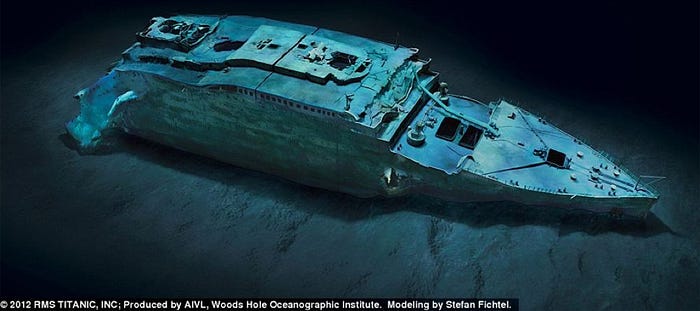
RMST is back. The re-emboldened salvage company will resume the mission for the Marconi telegraph machine — but this time, they’re not asking for permission.
They plan to lift yet more personal belongings from the debris field and say they “may recover free-standing objects inside the wreck,” including “objects from inside the Marconi room, but only if such objects are not affixed to the wreck itself”. (Note how carefully worded this is compared to last time’s attempt to cut open the wreck.)
The US District Court in Norfolk, Virginia, which oversees Titanic salvaging matters, is trying to block this latest bid by RMST by arguing that buried in a pact with the UK is a clause to treat the shipwreck as a gravesite.
RMST hasn’t yet filed a response in court, but they will likely, as they have previously, challenge the constitutionality of efforts to “infringe” on its “unconditional” salvage rights to the wreck.
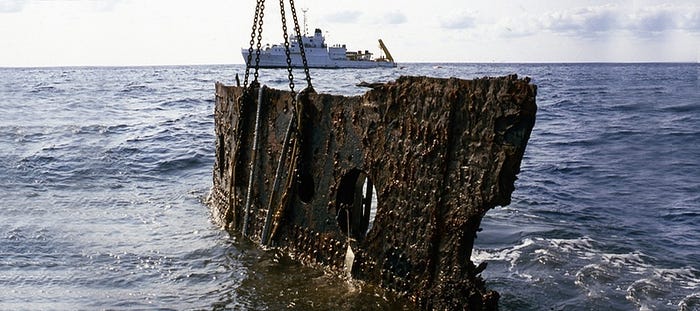
So here we are again: Deep inside the battle for the soul of Titanic where there are no rules, no boundaries and — apparently — no morality.
The debate about whether artefacts should be lifted from the wreck will always be a point of intensely heated discussion, and I have always been stuck in two minds about it.
I accept and fully endorse that Titanic’s wreck is a gravesite that should be left well alone, and I was proud to work at Titanic Belfast where that belief was reaffirmed through experiences that included speaking with the families of those who built, sailed and perished on the ship, and meeting Dr Ballard himself.
On the other hand, what can be benefitted from leaving everything down there to decay? Would it be better to respectfully retrieve what we can for future generations to view and learn from?
One thing I am sure of is that RMST has proven itself irresponsible and not the body to do either. Their crass profiteering and lack of sensitivity has been poor at best, but often reckless and disingenuous.

A firm and final decision must be made about the future of Titanic and her artefacts, which must be stuck to. It is a decision that must be in the public interest; preserve the memory of the 1,500 people who died and sensitively recount what happened that night for generations to learn from.
But the real tragedy of RMST’s latest money-grab lies in their exploitation of the genuine heroism of Phillips and Bride. The morally reprehensible — and legally questionable — profiteering of the most famous shipwreck in history has fallen even lower than the moral abyss inhabited by a fictional Hollywood antagonist intended to provoke outrage among film audiences.
The only distinction lies in the timing of Lovett’s realisation in Cameron’s 1997 epic, which comes early enough for audiences to forgive him.
That chilling irony appears to be lost entirely on RMST. Or maybe it’s not, and they simply don’t care.
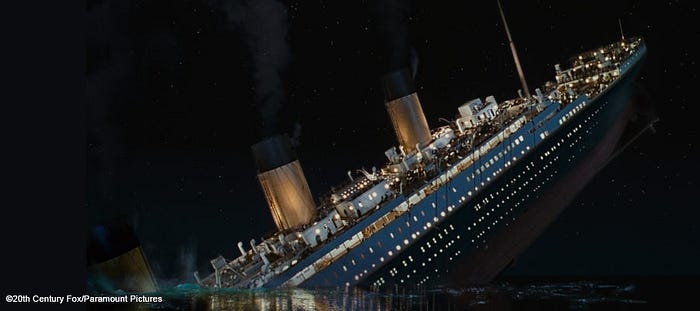
Either way, Titanic’s immense historical, cultural and societal impact will surely outlive RMST and its profiteering, but it is her memory and passengers’ right to rest in peace that we must protect now, more than ever.
The vice-like grip RMST has on Titanic’s future demands our immediate attention and urgent action. We are at a critical stage in the Battle for the Soul of Titanic, and it is this calling that looms even larger than the 73-year mission to find the great ship herself resting two-and-a-half miles beneath the ocean surface.
